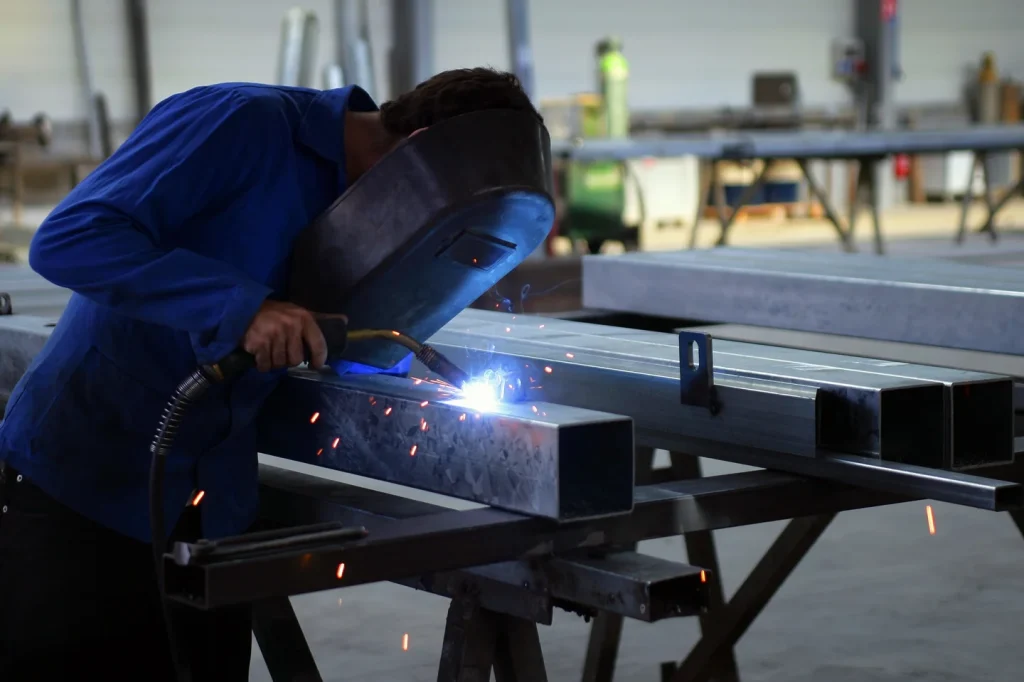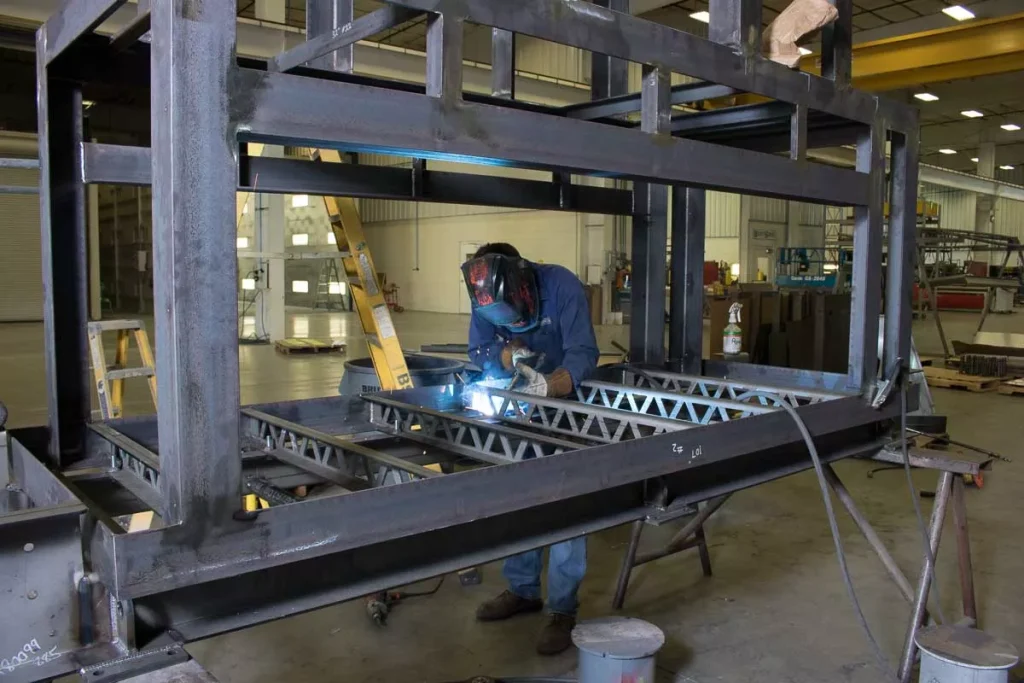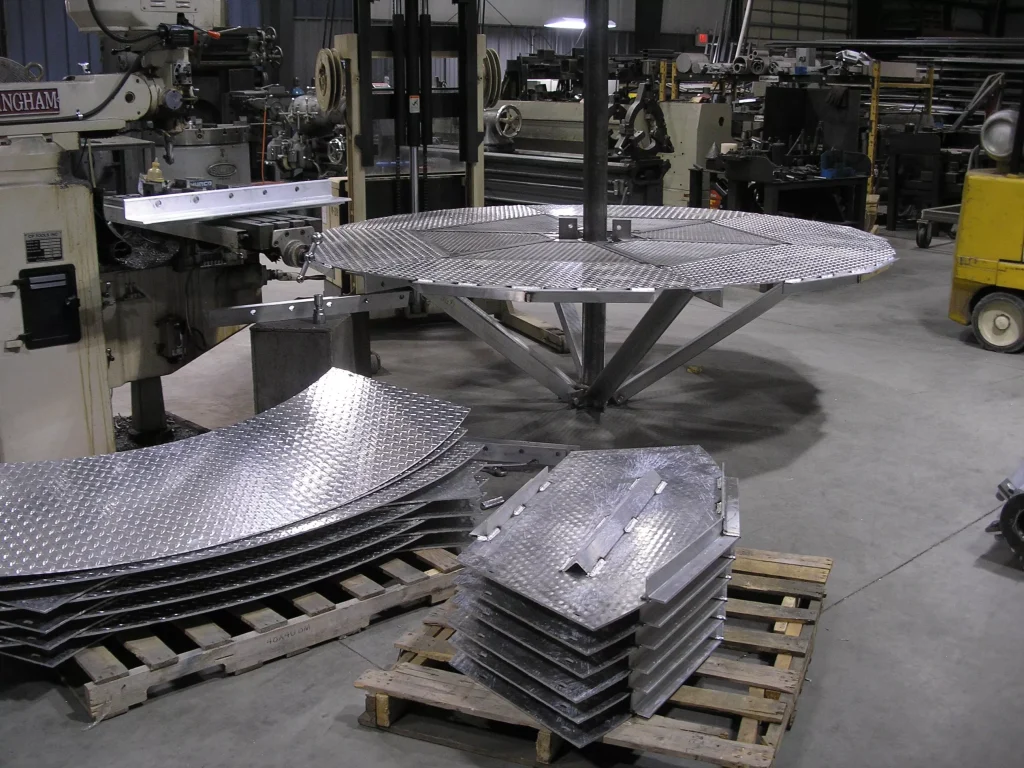Nowadays, we are surrounded by products made of metal. They are made of raw metal and assembled by different metal fabrication techniques. Metal fabrication is a broad technical term that usually includes many manufacturing processes: cutting, punching, forming, shearing, stamping, welding, etc. These fabrication techniques only highlight the metal. These manufacturing techniques are only shared when they highlight the metal’s properties and demonstrate its application’s versatility and when the raw metal is formed, cut, or molded into the final product. Manufacturing processes vary depending on the material and the desired end product. All processes can be used to manufacture mass-produced products or custom products. Most custom metal products are made from various commonly used metals and their alloys. Metal manufacturers typically start with stock metal parts (such as sheet metal, metal bars, metal blanks, and metal rods) to make new products.
Three Types of Metal Fabrication Processes
Metal fabrication is a booming and growing industry. Almost endless parts are already being produced for manufacturing companies worldwide. Examples include automotive frames, airplane fuselages, ship hulls, and beams for buildings, bridges, and towers. Custom fabricators also use it to make smaller products, including stairs, ductwork pipes, and artwork such as sculptures and commercial signs. The number of metal fabrication applications is incredible, but no matter what product is ultimately manufactured, the process can be summarized in three basic techniques: cutting, bending, and assembly.

Cutting and Grooving
One of the simplest and most common metal fabrication processes is cutting, which is usually the first step in metal fabrication. It is the process of cutting the raw metal into small pieces of the required length (usually large sheets are used in metal fabrication) to produce the desired semi-finished or finished metal product. However, whether it is steel, aluminum, iron, or other types of metals, cutting
metal will require different types of unique tools for cutting. The following types are generally available:
Plasma Cutting
Plasma cutting involves a plasma torch firing an electric arc through compressed air, which ionizes the air and produces a powerful flame that can cut any conductive metal, such as stainless steel and aluminum.
Laser Cutting
Laser cutting is a popular and effective thermal cutting technique. In this process, a focused beam of light melts the metal quickly and cuts it into the desired shape. The small point of the laser beam means that it can make delicate and minor cuts, as small as a tenth or even a hundredth of a millimeter, depending on the machine.
Water jet cutting
Water jet cutting machines apply ultra-high pressure to the stream by forcing it through a small nozzle. The water beam is so concentrated that it can cut through metal plates.
In addition to these three methods, there are many cutting methods, each with unique advantages and limitations, so they are often used for different applications. Different cutting methods can cut different types of finished metal, i.e., diamond plate, corrugated metal sheet, steel, pipe, etc. Cutting these materials can be done with power tools or even handheld blades such as hacksaws, back saws, or top saws – it ultimately depends on the cutter’s intent.

Bending
After a metal fabricator has cut the raw metal, it must be bent into the desired shape by bending before it can be further processed. Bending is commonly used for metal pipes, tubes, and bars, but some special applications may also require bending processes. There are also several ways to bend a part into a desired shape in metal fabrication. Some metal fabricators hammer sheet metal or profiles into the desired shape manually or by machine power. Many metal fabricators are now using bending machines for bending processes. But the fastest method of bending is to use a punch press. The punching process allows the sheet metal to be formed directly into the desired shape using a die. Today, different techniques, such as bending, are widely used in the automotive, construction, industrial, and aerospace industries.
Assembly
The assembly is the final step after the sheet metal or profile has been cut and bent. This process is designed to assemble all the manufactured parts to form the final product or to add to a larger assembly. This can be done by welding or using crimped joints, screws, glue, or other fasteners. After assembling all the parts and putting the final touches on the product, the company will ship the finished product to the customer.
In Summary
Metal fabricators can use many machines and techniques but must rely on a three-step cutting, bending, and assembling process. These three processes allow a metal fabrication company to transform raw metal into new products. Elimold is the right choice for you if you want the best metal products. Contact us today to learn more about the different metal fabrication types or get a free estimate for our services.

